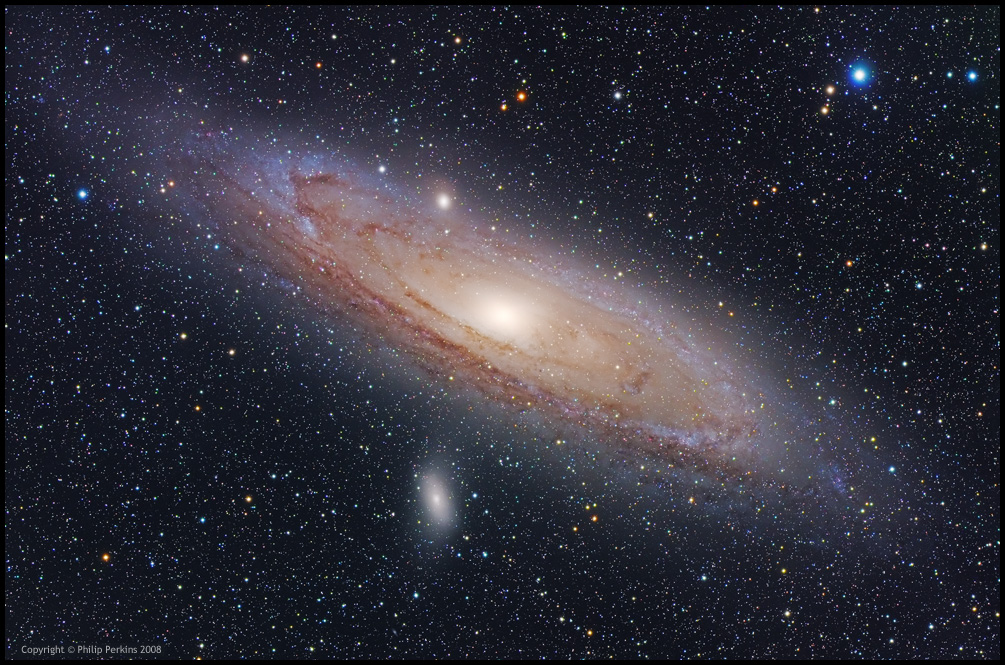
 |
Object data: M31 (NGC 224, the famous Andromeda Galaxy) is the nearest large galaxy to our own Milky Way galaxy. It is so bright that it is easily seen by naked eye as a faint fuzzy patch of light in the northern part of Andromeda. It forms part of the Local Group of galaxies along with our Milky Way, its satellite galaxies, and M33. Of all members of the Local Group M31 is considered to have the closest external resemblance to the Milky Way, thus it is often referred to as a 'sibling galaxy'. Also seen in this photograph are M31's satellite galaxies M110 (below) and M32 (above) - in this respect it is also similar to the Milky Way, with M110 corresponding to the Large Magellanic Cloud and M32 corresponding to the Small Magellanic Cloud. M31 is an 'island universe' - a gigantic collection of billions of stars estimated to be 2.54 million light years distant. It has been observed since ancient times and was first catalogued as long ago as 905 AD. The common name of M31 derives from Charles Messier's entry # 31 in his famous Messier catalogue in August 1764.
Date: 25/10/2008
Location: Southern France
Conditions: Calm, moderate dew, transparency=9, seeing=8
Optics: Takahashi FSQ-106ED f/5 working at f/5
Mount: AP 900 GTO on Portable Pier
Camera: SBIG STL-11K, SBIG LRGBC filter set, -25°C
Guiding: Integral STL-11K autoguider
Exposure: Normal LRGB Seq: 24x 10 minutes; 3x 10 : 6.5 : 10 minutes (binned 2x2). Short L Seq: 12x 1 minute.Processing: Image acquisition, calibration, and initial processing using Maxim DL, subsequent processing in RegiStar and Photoshop.
Notes: Fairly modest processing was used to try to preserve more natural colours and dynamic range. Also no sharpening was used on the downscaled images to try to preserve the natural appearance of the stars. There is such a wealth of detail in the original image that sharpening is really superfluous - to get a sense of this please see the high res version.
|
|
|
|